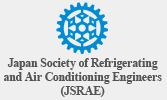Technical Summary Lectures ~Learn from Japanese Pioneers~
In the opportunity of the biggest conference in every four years, IIR-ICR2015, held in Japan, distinguished Japanese pioneers will make lectures. They will present about history, present situations, futures in each of their research fields and give valuable comments/suggestions to young and senior researchers who are actively doing researches on frontier science/engineering in all over the world.
Date: Monday, August 17
Room: 411+412
TSL-Mo-a-113:30-14:20
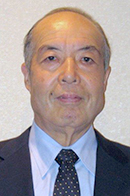
Koichi Watanabe
Professor Emeritus, Keio University
![]() PIONEERING CHALLENGE ON THERMODYNAMIC PROPERTIES RESEARCH ON REFRIGERANTS
PIONEERING CHALLENGE ON THERMODYNAMIC PROPERTIES RESEARCH ON REFRIGERANTS
On the basis of personal involvement since earlier 1970's, a sort of chronological overview on global challenge for various thermodynamic properties of refrigerants will be discussed. Emphasis will be given to drastic transition of refrigerants being applied to refrigeration and air conditioning systems during last 45 years simply due to efficient use of energy under strengthened constraints associated with global environmental issues. The presentation focuses on an importance of fundamental research such as refrigerant properties research to accelerate advanced technology in the related field that would become feasible throughout continuous challenge by experts under worldwide collaboration aiming to common objectives. The goal does always exist whenever the next generation can also be stimulated significantly.
TSL-Mo-a-214:30-15:20
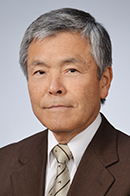
Hiroshi Honda
Professor Emeritus, Kyushu University
![]() IMPORTANCE OF SURFACE TENSION EFFECT IN ENHANCING CONDENSATION IN REFRIGERANT CONDENSERS
IMPORTANCE OF SURFACE TENSION EFFECT IN ENHANCING CONDENSATION IN REFRIGERANT CONDENSERS
This lecture reviews advances in the understanding of the mechanism of heat transfer enhancement for condenser tubes used in the air-conditioners and refrigerators. The main subject is the importance of surface tension effect in enhancing condensation on various kinds of finned tubes. For condensation on a horizontal low finned tube, a prediction method for heat transfer that is based on the numerical analysis of combined gravity and surface tension drained condensate flow on the tube is presented. The prediction method is extended to condensation in tube bundles. For condensation in a horizontal microfin tube, two prediction methods for heat transfer that are based on the annular flow model and the stratified flow model are presented. For both cases of shell-side and in-tube condensation, the theoretical predictions are compared with available experimental data. The limitations of the developed prediction methods and the direction of further research are also mentioned.
TSL-Mo-a-315:30-16:20
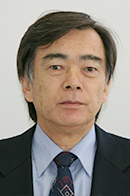
Kenji Tojo
Professional Engineer, TOJO R&D Design Office
Waseda University
![]() COMPRESSOR TECHNOLOGIES FOR A/C AND REFRIGERATION SCROLL COMPRESSORS PAST, PRESENT AND FUTURE
COMPRESSOR TECHNOLOGIES FOR A/C AND REFRIGERATION SCROLL COMPRESSORS PAST, PRESENT AND FUTURE
Refrigeration and air conditioning equipment is widely utilized in our life and has contributed greatly to improve the quality of living environment along with the improvement of convenience. The heart of the refrigeration and air conditioning equipment is a compressor. Primarily reciprocating, rotary, scroll, screw and centrifugal type is selectively adopted depending on the capacity range and application. Each type of compressor has an excellent reputation for high quality, performance and durability, and is responding to the demands for energy conservation, space saving and quiet operation. Among these compressors, scroll compressor was developed and first commercialized in Japan. Since then, scroll compressor has been applied to air conditioning and refrigeration system in world wide. This lecture focuses on the scroll compressor and traces the history of technology development that leads from its initial invention to the present, and also describes future prospect.
TSL-Mo-a-416:30-17:20
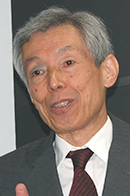
Sunao Kawai
Professor Emeritus, Waseda University
![]() HEAT PUMP TECHNOLOGIES FOR A SUSTAINABLE SOCIETY
HEAT PUMP TECHNOLOGIES FOR A SUSTAINABLE SOCIETY
For the establishment of a sustainable society, it is necessary to reverse the problem of global warming. Heat pumps are one of the key technologies for energy conservation and the reduction of CO2 emissions because they make it possible to recover waste heat or renewable geothermal energy, and they increase the temperature to a sufficient level for different heating processes. For an industrial heating process, the conditions required for a heat pump operation vary, and it is therefore important to develop a suitable heat pump system for each particular case. This lecture illustrates some examples of applying heat pumps to an industrial heating process and discusses an approach for designing an energy system.
Date: Monday, August 17
Room: 414+415
TSL-Mo-b-113:30-14:20

Mitsuhiro Udagawa
Professor Emeritus, Kogakuin University
![]() DESIGN OF SOLAR BUILDINGS
DESIGN OF SOLAR BUILDINGS
– BASIC THEORY AND APPLICATION OF SOLAR HEATING AND COOLING SYSTEMS –
The solar thermal utilization for heating and cooling is a major important technology of the renewable energy use. The purpose to use the solar thermal systems in buildings is to reduce the heat loads, such as DHW(domestic hot water) heating load, space heating load and space cooling load. The development of modern technologies related to solar heating and cooling started in the late 1970s. Flat plate solar collectors with selective absorber and evacuated tube collectors have been common technology from the early 1980s. The various solar utilizing systems integrated with building energy and environment systems also have been developed. In order to design and evaluated the solar energy systems, the system simulation using computers is very useful. In addition to the detailed simulation, the sophisticated and simple calculation method based on the basic theory is also very important for rational decision in the design.
TSL-Mo-b-214:30-15:20
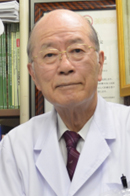
Sajio Sumida
Honorary Member, IIR and Fellow of the Society for Cryobiology
Director, Dr. Sajio Sumida Clinic
![]() CRYO-BIOLOGY AND -MEDICINE IN THE 21ST CENTURY
CRYO-BIOLOGY AND -MEDICINE IN THE 21ST CENTURY
The 21st century will be the times of the applied cryobiology that include four domains: preservation, minimally invasive destruction of diseased cells and tissues for long term storage, cryosurgery, a minimally destruction of disease tissues, lyophilization of pharmaceuticals, and study of cold adaptation of plants and animals. About the cryopreservation, B. Luyet, C. Polge, A.U. Smith, and J. Lovelock paved the milestones of precious disciplines during 1940s through 1960s. A lot of researchers in the similar field joined them to build up a new science of Cryobiology, which has played innumerably important roles in veterinary medicine and human clinical medicine, that is animal breeding, human transfusion, and transplantation. Especially cryopreserved bone marrow has supported the cancer patients after chemotherapy or irradiation, but it is sad cancer is still now the most leading cause of death for human being.
Outlook on new ethic is going to be borne by the success of vitrifying of human ova and embryos, because there are problems how to handle the frozen human gametes and embryos. Should those genetic resources be not cryopreserved? We happen to find the small liquid nitrogen Dewar flasks with frozen or vitrified "embryos" in the hospitals for infertility treatment. Even those embryos in a state of cryptobiosis have human rights.
On the other hand, modern cryosurgery which did an epoch-making development in the 1960s is not playing the leading part in cancer therapy, but it is lucky that the percutaneous cryo-destruction of tumor by a probe with a 1.5 mm in diameter using the Argon-Helium system was enabled to attain the freezing of small tumor in the body under the MRI-guide.
Finally, a cryoimmunologic response has been actually provided with a limited number of cancer patients, that means cryoimmunology is not myth, but may be a precious “nest egg” of cryosurgery, that made me thrill.
TSL-Mo-b-315:30-16:20
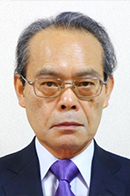
Yasuyuki Sagara
FOOD KANSEI COMMUNICATIONS, CORP. (FKC)
Professor Emeritus, The University of Tokyo, Japan
![]() DEVELOPMENT OF QUALITY CONTROL TECHNOLOGIES BASED ON ICE CRYSTAL MORPHOLOGY FORMED IN FROZEN FOODS
DEVELOPMENT OF QUALITY CONTROL TECHNOLOGIES BASED ON ICE CRYSTAL MORPHOLOGY FORMED IN FROZEN FOODS
The methodologies have been presented for searching optimum freezing and storage conditions based on ice crystal morphologies formed in frozen foods. Micro-slicer image processing systems were developed to measure the three-dimensional structure and distribution of ice crystals formed in frozen food materials. The system has functions to reconstruct the 3-D image based on the image data of exposed cross sections obtained by multi-slicing of a frozen sample with the minimum thickness of 1.0µm and display the internal structure as well as an arbitrary cross section of the samples choosing observation angles. The artificial neural network modeling was applied to the obtained data on ice crystals, viscoelastic properties and sensory evaluation scores for food samples. Thus the optimum freezing and storage conditions to maintain the quality of frozen foods were demonstrated quantitatively for model solution systems stained by fluorescent indicator, ice cream, raw beef and cooked rice.
TSL-Mo-b-416:30-17:20
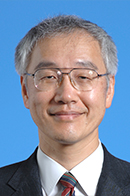
Shinsuke Kato
Professor, Institute of Industrial Science, The University of Tokyo
![]() CFD VISUALIZATION OF VENTILATION EFFECTIVENESS IN ROOM
CFD VISUALIZATION OF VENTILATION EFFECTIVENESS IN ROOM
The major object of ventilation in a room is to replace contaminated air with fresh clean air as quickly as possible. The efficiency of contaminant exhaust and movement of fresh air to the point in question differ according to the position of the point.
A few scales for measuring ventilation efficiency in a room are introduced.
Most of those were defined in order to evaluate the distributions of "ventilation efficiency" at each point in a room. They are calculated based on the distributions of tracer concentration in a room with "Computational Fluid Dynamics (CFD)".
To demonstrate the usefulness of the scales, the characteristics of ventilation efficiency in a hospital ward are analyzed with them.


